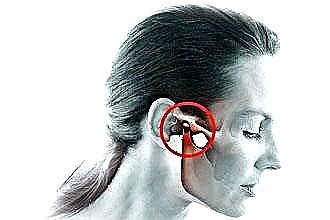The trachea is a vital organ that moves air along the respiratory tract from the larynx to the bronchi and lungs. In this regard, the pathological process occurring in this part of the respiratory tract can be a serious complication in the provision of oxygen to the body, contribute to respiratory failure. Tracheal cancer is a pathology that, in addition to its malignant course, can lead to such a serious complication as narrowing of the airway and suffocation.
Characteristics of the disease
Primary tracheal cancer, characterized by the growth of a malignant tumor in the thickness of its wall, is a rare pathology. At the same time, secondary tracheal cancer has become widespread. It is caused by the fact that tumors from other nearby organs grow into its wall. Most often, such a secondary pathological process develops in connection with a malignant formation in
- larynx;
- thyroid gland;
- the underlying sections of the bronchi and lungs;
- organs of the mediastinum.

Depending on which tissue is involved in the pathological process, the following types of malignant tumors of the trachea are distinguished:
- cylindroma, which develops from the cells of the mucous glands;
- squamous cell carcinoma that affects epithelial cells;
- sarcoma, a tumor that develops from connective tissue cells.
Such forms are much less common:
- reticulosarcoma;
- reticuloendothelioma;
- neurofibroma, etc.
Cylindromas develop most slowly. The first signs of tumor growth may appear after 3-4 years. However, in the future, after the surgical treatment, they are characterized by the rapid development of relapse and metastasis. Squamous cell carcinoma may not manifest itself for two years. It is this histological form that is most common in malignant tracheal lesions.
Clinical signs
The main symptoms of tracheal cancer are:
- cough;
- difficulty breathing;
- an admixture of blood in sputum;
- violation of the voice-forming function.
Cough is the earliest symptom of tracheal involvement. By its nature, it is dry, paroxysmal. After a while, sputum may appear. However, the nature of the cough is variable. After wet, it can transform back into dry. In this case, the sputum can be mucous or purulent, have streaks of blood. In some cases, it is difficult to separate, and the course of the disease resembles bronchial asthma. In other cases, sputum is coughing up easily and in large quantities.
At this stage, diagnosis is difficult, since the disease is masked by the inflammatory process in the trachea. Tracheal cancer should be differentiated from diseases caused by specific pathogens, tuberculosis, syphilis, and chronic bronchitis. Diagnosis is especially difficult in cases where there is a combined lesion, malignant tumor and inflammatory process.
 The next important symptom is the presence of shortness of breath, the appearance of which is caused by difficulty breathing as a result of narrowing of the lumen of the trachea. At first, it develops only under load. The spread of the process makes the presence of this symptom permanent. When the tumor grows, the patient takes a forced position of the body, sitting.
The next important symptom is the presence of shortness of breath, the appearance of which is caused by difficulty breathing as a result of narrowing of the lumen of the trachea. At first, it develops only under load. The spread of the process makes the presence of this symptom permanent. When the tumor grows, the patient takes a forced position of the body, sitting.
Depending on the localization of the process, dyspnea can be of an inspiratory or expiratory nature, that is, it manifests itself only on inhalation or exhalation.
With the defeat of the upper trachea, close to the larynx, inhalation is predominantly difficult.
This breathing disorder is accompanied by the presence of whistling noises heard from a distance.
Narrowing of the trachea at chest level usually results in expiratory dyspnea. In this case, the diagnosis should be carried out with obstructive bronchitis or bronchial asthma.
An important factor indicating the involvement of the larynx and trachea in the process is a change in voice. It is caused by a narrowing of the airway lumen, as well as a violation of the innervation of the vocal cords as a result of damage to the recurrent nerve. With the spread of the tumor process and the involvement of the esophagus in it, there is a difficulty in the process of swallowing and the passage of the food lump. At the same time, there is a fetid odor from the mouth, due to stagnation of food and the decay of the tumor.
The development of bleeding testifies to the malignant process of the tumor. In the initial stages, it manifests itself as streaks of blood in saliva or sputum, later bleeding may develop. The performed microscopic examination allows detecting malignant cells in the sputum.
Diagnostics
 The main diagnostic method is endoscopic examination. In case of damage to the upper trachea, laryngoscopy may be sufficient; in case of damage to the middle and lower trachea, the diagnosis can only be clarified by tracheoscopy. When conducting a study, it is necessary to take into account the possibility of developing such a complication as bleeding.
The main diagnostic method is endoscopic examination. In case of damage to the upper trachea, laryngoscopy may be sufficient; in case of damage to the middle and lower trachea, the diagnosis can only be clarified by tracheoscopy. When conducting a study, it is necessary to take into account the possibility of developing such a complication as bleeding.
The nature of the tumor process is diverse. The pathological focus can be presented in the form of a flat formation covering a section of the tracheal wall, or it can look like a proliferation of tuberous epithelium protruding into the tracheal cavity and narrowing it. Tracheal cancer can also appear as a ring-shaped infiltrate.
It is possible to conduct a histological examination, that is, to clarify which cells were involved in the process, is possible only after a biopsy.
By removing a piece of pathologically altered tissue, and conducting a thorough examination under a microscope, it is possible to draw a conclusion about mutated cells. Such a diagnosis contributes to the correct prescription of treatment. In addition, many life predictions are based precisely on the results of histological examination.
To clarify the localization of the process, various hardware techniques are also used:
- X-ray examination of the trachea with the introduction of a contrast agent;
- Ultrasound of the neck and internal organs to determine metastases;
- computed and magnetic resonance imaging.
Laboratory diagnostics is of secondary importance. A complete blood count indicates anemia. ESR indicators indicate the development of severe pathology in the body. When a bacterial infection is attached, there may be a shift in the leukocyte formula to the left.
The course of the disease
Unlike other cancers, the stage of the process for prescribing treatment is not critical. This is due to the fact that metastases in this course of the tumor process are rarely determined.
The cause of death of patients is usually asphyxiation, bleeding, and not cancer intoxication. First of all, regional lymph nodes are affected by metastases. From distant organs - the thyroid gland, lungs, liver, kidneys, spine.
How long they live with tracheal cancer depends on the location of the tumor in the trachea, how much it narrows the lumen, and which nearby organs are affected. The histological form of the disease is also important. The cylindroma is characterized by the most benign course. With this form, the survival rate for 5 years is observed in 65-85% of patients. The presence of squamous cell cancer of the trachea allows only 40% of patients to survive for 5 years.
Chemotherapy for tracheal cancer is ineffective. The main treatments are surgery and radiation therapy.
The task of surgery is to excise a malignant tumor within healthy tissues.With the circular nature of the tumor process, a transverse resection of the trachea is performed, then the edges of the wound are sutured.
However, with the underlying tumor location, such a surgical intervention is technically difficult. The operation can consist only in the imposition of a tracheostomy, dissection of the trachea and the introduction of a special tube into its cavity. The breathing process will be carried out precisely through this device.
In this case, it becomes more difficult for patients to live. The quality of life is severely impaired. The inserted cannula must be removed to cleanse crusts and mucus, and the respiratory tract must be regularly freed from sputum. These measures are aimed at preventing suffocation from blockage of the lumen with dry crusts.
The development of tracheal cancer is most common in older men with long smoking history. Therefore, giving up this bad habit can prevent this serious illness.



